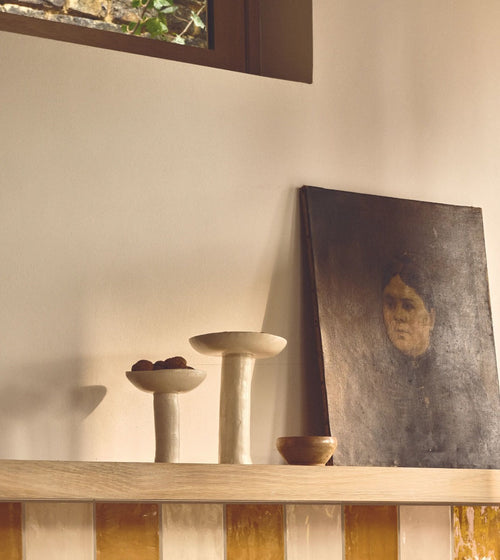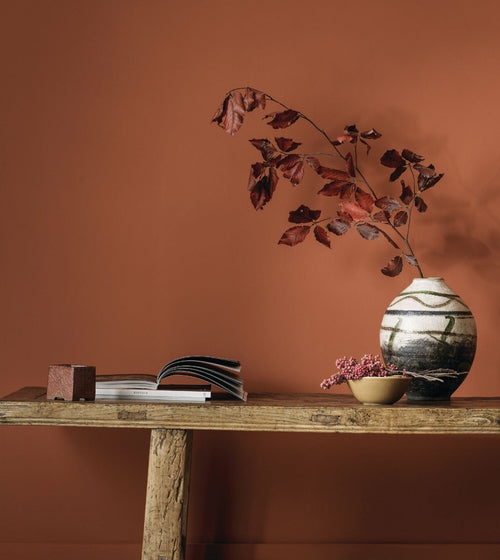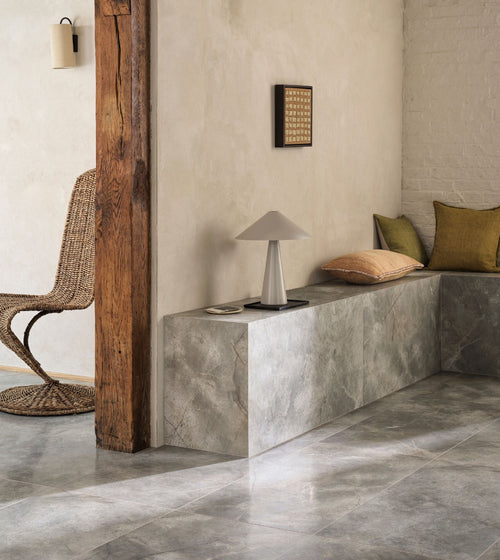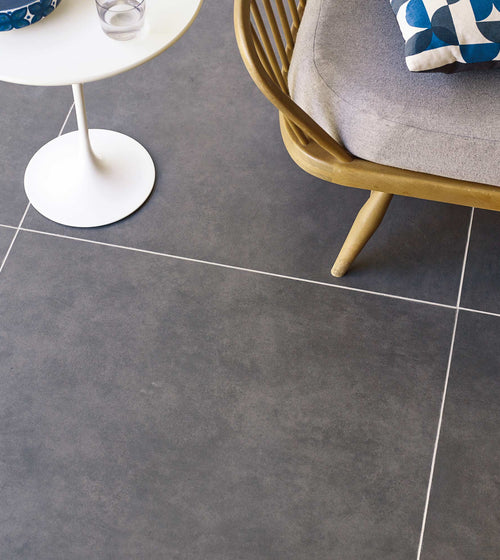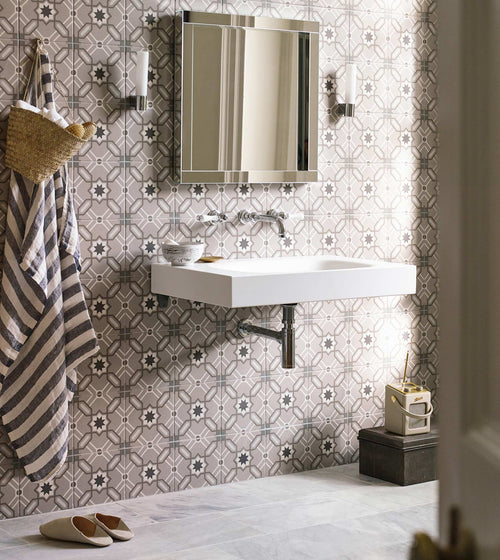Choosing the best marble effect tiles | Should you use porcelain lookalikes rather than natural marble tiles?
Marble tiles have long been revered for their timeless elegance and luxurious appeal, making them a popular choice for homeowners. However, while the allure of marble is undeniable, its higher maintenance needs, especially in high-traffic areas like kitchens, often prompt homeowners to seek other tiles that offer comparable aesthetics with enhanced durability.
Crafted to replicate marble's distinctive veining and textures, porcelain tiles offer a high-quality alternative. While both marble and marble effect tiles have their respective benefits, in some instances, one choice may prevail over another.
In this guide, we will explore both natural marble and marble effect tiles, comparing their features, and how to choose the best tiles for your home.
Click on the link to jump to that section:
- Comparing bathroom marble and marble effect tiles
- Should you use natural marble tiles or marble effect tiles for your kitchen?
- Choosing colours for marble effect tiles
- What to consider when choosing marble effect tiles
- Frequently asked questions
Browse through the various marble and marble effect tiles for bathrooms.
Browse through the various marble and marble effect tiles for kitchens.
Compare the most popular colour schemes for marble effect tiles.
Discover the main factors to consider when buying marble effect tiles.
Read the most common queries on marble effect tiles.
Comparing bathroom marble and marble effect tiles
Tiles have remained a popular choice in bathroom designs, for key areas like shower walls, wet room floors, and splashbacks. Features to look for include water-resistant properties and whether the bathroom tiles are easy to clean and maintain.
Natural marble tiles
Advantages
Natural marble exudes luxury and sophistication, adding a touch of opulence to any bathroom space. Each piece of marble is distinct, featuring intricate veining patterns that lend character and charm to a bathroom. A classic look, when properly sealed and maintained, marble bathroom tiles can withstand moisture and humidity typical of bathroom environments.
Disadvantages
Requires regular sealing and cleaning to prevent staining and etching from water and toiletries. Natural marble tiles also tend to be more expensive than their synthetic counterparts, potentially exceeding budget constraints.
Find out more about choosing marble bathroom tiles with our expert guide here.
Marble effect tiles
Advantages
Marble effect bathroom tiles offer a more affordable alternative to natural marble while replicating its aesthetic appeal. Unlike natural marble, marble effect tiles are typically easier to clean and maintain, requiring minimal upkeep. Available in various sizes, shapes, and finishes, marble effect tiles offer a great variety of designs.
Disadvantages
Though highly durable, marble effect tiles may be cool to the touch during the winter months. Consider pairing flooring tiles over underfloor heating, depending on their suitability.
Compare other bathroom floor tile effects, including stone effect, with our expert guide here.
For more information, read our guide on choosing the right bathroom tiles here.
Should you use natural marble tiles or marble effect tiles for your kitchen?
Transforming your kitchen may be as simple as incorporating tiles into the layout. Whether this is for kitchen floors or a statement splashback piece, many homeowners have been using kitchen tiles effectively for decades.
Natural marble tiles
Advantages
Natural marble creates an eye-catching look in kitchen spaces and their unique patterns are perfect for backsplashes. With proper care, kitchen marble tiles can last a lifetime, particularly as they come in a range of finishes depending on what the area will require.
Disadvantages
The main concern for kitchen marble tiles is the potential for staining from acidic substances like lemon juice and vinegar. Homeowners may find regular maintenance and sealing necessary if used behind areas where food is created. Acidic foods and harsh cleaning products can cause etching on the surface of marble if not properly sealed, diminishing its pristine appearance. Marble can also be expensive, making them potentially unsuitable for large kitchen floors.
Marble effect tiles
Advantages
Marble effect tiles offer a more affordable alternative to natural marble while replicating its aesthetic appeal. Unlike natural marble, marble effect tiles are typically easier to clean and maintain, requiring minimal upkeep and making them ideal for kitchen use.
Kitchen marble effect tiles are available in various sizes, shapes, and finishes to replicate the classic marble look. As they require less maintenance than natural marble, marble effect tiles offer greater flexibility in design options; perfect as kitchen splashbacks behind sinks, hobs and food preparation areas.
Disadvantages
Though they replicate various marble finishes, kitchen marble effect tiles may not be as aesthetically pleasing as natural marble tiles. To avoid this, compare different styles and finishes, or consider other porcelain tiles that are popular in kitchens, such as stone effect and wood effect tiles.
For more information, read our guide on choosing the right kitchen tiles here.
Choosing colours for marble effect tiles
One of the major benefits of marble effect tiles is their versatility, and their ability to replicate different marble styles, including Onyx effect and Calacatta.
Marble effect tiles are available in a plethora of colours, ranging from classic whites and greys to bold blacks and vibrant hues.
When selecting colours for marble effect tiles, consider the overall aesthetic of your space, as well as factors such as lighting and decor, to ensure a harmonious and cohesive design scheme.
What to consider when choosing marble effect tiles
Marble effect tiles are a perfect choice for adding an element of luxury to your home, without worrying about high maintenance or damaging the tiles.
Depending on where and how they are used, homeowners should consider certain factors when using marble effect tiles in their interior design:
Wall tiles
Compared to marble, lookalike tiles may be more suitable for wall use, as porcelain can be easier to install. When comparing marble effect tiles, ensure you are checking the tile's specifications and installation requirements and consider the following:
How heavy is the material?
Is the tile suitable for walls?
Are they stain-resistant?
Floor tiles
As a cheaper alternative, marble effect tiles can benefit large areas such as kitchen floors and other living areas. Using tiles can create a seamless look throughout your home. Make sure to ask the following questions on marble effect floor tiles:
Are they suitable for high–traffic areas?
Are they susceptible to damage?
Can they be used over underfloor heating?
Ultimately, the final decision is up to your own style and preferences. Marble effect tiles are highly versatile for any room type. However, with an extensive range available, it can be difficult to know which to choose. To ensure that you are completely satisfied with your tile choice, consider a bespoke design service.
Our design service is here to help maximise your space and bring your ideas to life with 3D visualisations and mood boards. Working with our expert designers, this service is ideal for visualising marble effect tiles of your choice, to see which colours and patterns will work best.
Book your design appointment today to speak to our experts.
Fired Earth is an acknowledged authority on colour and design, creating and supplying handmade and high-quality tiles of all styles and materials. With a range of bathroom and kitchen tiles available for walls and floors, we have an extensive collection that is perfect for any occasion.
Contact Fired Earth for more information, or visit one of our 26 showrooms in the UK.
Frequently asked questions
Are marble effect tiles heat resistant?
Marble effect tiles are generally heat resistant, but the extent of their resistance can vary depending on the specific material and manufacturing process. It's advisable to check the specifications provided by the manufacturer to ensure they meet your requirements for heat resistance.
Related content
Comparing the Best Bathroom Floor Tile Effects | Buyer's Guide
